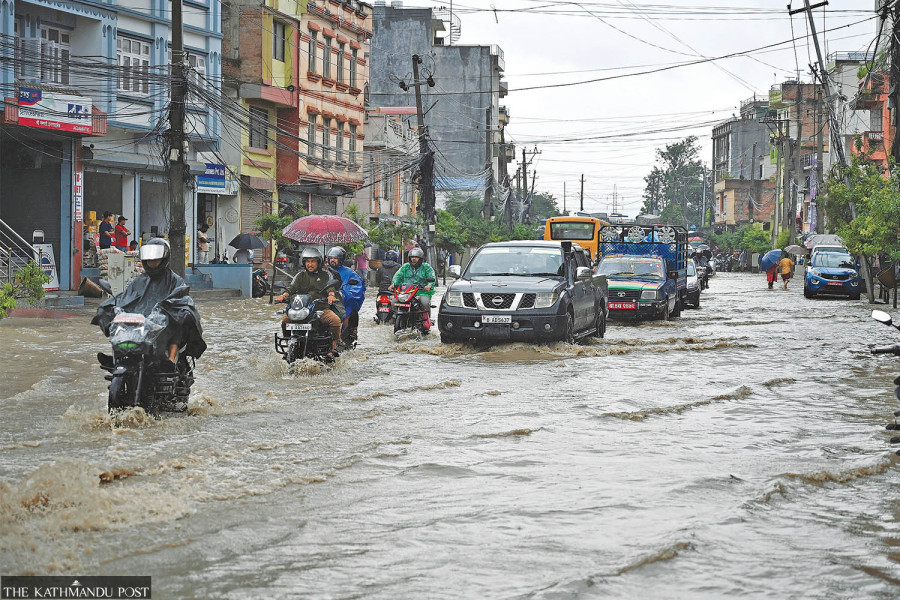Health
Nearly 60 percent of drinking water in Lalitpur district contaminated with deadly microbes
Kathmandu Upatyaka Khanepani Limited, the water supply agency, urges the public to boil water properly before drinking.
Post Report
Nearly 60 percent of drinking water samples collected from various places of Lalitpur district—Lalitpur Metropolitan City, Godawari and Mahalaxmi municipalities—are found to be contaminated with faecal coliform.
Officials at the Health Office, Lalitpur said that drinking water samples were collected from the local units following an outbreak of cholera in recent weeks.
“Out of 12 samples of drinking water collected for quality checks, faecal coliform was found in seven,” said Shree Bhadra Sharma, a lab technician at the Lalitpur health office. “We have started chlorinating drinking water at the sources and have taken other measures to prevent further spread of waterborne diseases, including cholera.”
Faecal coliform, a microscopic organism, lives in the intestines of warm-blooded animals or in their faeces.
The presence of faecal coliform indicates that the drinking water being used by the residents of Thaiba in Godawari Municipality in Lalitpur is contaminated with sewage, according to doctors.
Of the 30 cholera cases reported from across the country, 19 were from various areas of Lalitpur and the remaining from Kailali (8), Kathmandu (1) and Pyuthan (2).
Cholera is a highly infectious disease that causes severe diarrhoea and vomiting, leading to dehydration and or even death within a few hours if untreated. The World Health Organisation says cholera is a global threat to public health and an indicator of inequality and a lack of social development.
Health officials said that the Vibrio cholera 01 Ogawa serotype has been confirmed in the stool sample of an infected patient.
Faecal coliform had also been detected in the study carried out on water samples collected from Godawari Municipality before the onset of monsoon.
As the monsoon is an epidemic season, when most drinking water sources become contaminated due to flooding, presence of deadly microbes—E coli and faecal coliform—in drinking water is not unusual, health officials say. Even jar water, which is generally considered safer compared to water from other sources, often gets contaminated during the monsoon season.
What concerns officials most is the apathy of the responsible agencies in launching awareness drives about the risks and other preventive measures.
Most local authorities across the country halted testing of drinking water just before the start of monsoon citing budget constraints.
Officials at the Kathmandu Upatyaka Khanepani Limited (KUKL) said that it is the responsibility of consumers themselves to ensure that water is safe before drinking, as the utility cannot guarantee the safety of drinking from every tap.
“We request consumers to boil water properly before drinking, as water gets contaminated during the monsoon season due to leakage in pipes and mixing of drainage and rainwater,” said Sailaja Acharya, assistant manager of the KUKL. “We have increased the level of chlorine at the treatment plant and in reservoirs, but water could get contaminated when it reaches household taps.”
The KUKL has started supplying water from the Bagmati river to household taps after supply from the Melamchi River was halted. Officials said that water from the Bagmati River gets chlorinated before being supplied to household taps.
Doctors say consumption of contaminated water not only can cause diarrhoeal infections and deadly cholera but also increases the risk of contracting dysentery, typhoid, and hepatitis A and E.
They stress that awareness drives and ensuring safe drinking water are the only ways to protect people from water-borne diseases.
A combination of careful surveys, provision of safe drinking water, good sanitation and hygiene standards, social mobilisation and treatment is required to contain the spread of infection, according to doctors.




 13.12°C Kathmandu
13.12°C Kathmandu













